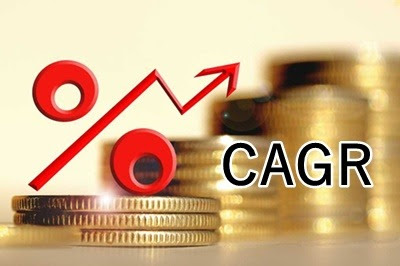In continuation of my previous blog – part I, investors prefer
consistency in return and not volatility. However, risk can be mitigated to some
extent if investors are consistent in their own investments first for more than a decade rather than seeking a consistent return, and further strictly follow asset allocation simultaneously, which contributes to 90% of the return in the overall portfolio.
(this is a point to point investment formula and not recurring formula for SIP)
One must also understand that there is a basic difference between secured instruments like FD and market-link products like equity MF. One should not compare an Apple with an Orange. FD can never give an inflation-adjusted return, whereas equity MF can not deliver linear returns like FD on a year on year basis. FD is guaranteed hence returns are low, and equity MF is volatile hence return are high.
Although despite having a 12% CAGR return for 10 years in following both cases, there could be much interim volatility in the case of equity investments.
The formula for CAGR is derived from the power of compounding
formula:
Fv = Pv * (1+R) ^ T
R = (Fv / Pv) ^ (1/t) – 1
Out of the three variables (Pv, R & T), what is in our hand is the Principal amount to deploy, and the Time period for which we invest. Returns are never in our control, however, the majority of investors only focus on getting the highest return. The most powerful variable among the three is Time, which is usually ignored by the investor.
| Expectation | |||||||||||
| Year | 2010 | 2011 | 2012 | 2013 | 2014 | 2015 | 2016 | 2017 | 2018 | 2019 | CAGR |
| Return p.a. | 12% | 12% | 12% | 12% | 12% | 12% | 12% | 12% | 12% | 12% | 12% |
| Reality | |||||||||||
| Year | 2010 | 2011 | 2012 | 2013 | 2014 | 2015 | 2016 | 2017 | 2018 | 2019 | CAGR |
| Return p.a. | 21% | -31% | 34% | 6% | 102% | 28% | 5% | 41% | -22% | -12% | 12% |
- Therefore, the CAGR is the average rate at which the investment amount has grown from one value to another
from the start point to the endpoint.
- The problem or anticipation here is that the growth of the investment amount is not at a constant rate. As seen from the given example rate deviate from -31% to 102%.
- By quoting 12% CAGR for 10 years, it hides the interim volatility of the scheme and makes an illusion of steady growth year on year.
- Investor
must be aware with year on year fluctuation in return, volatility, standard
deviation – all are termed as Risk in layman terms.

No comments:
Post a Comment